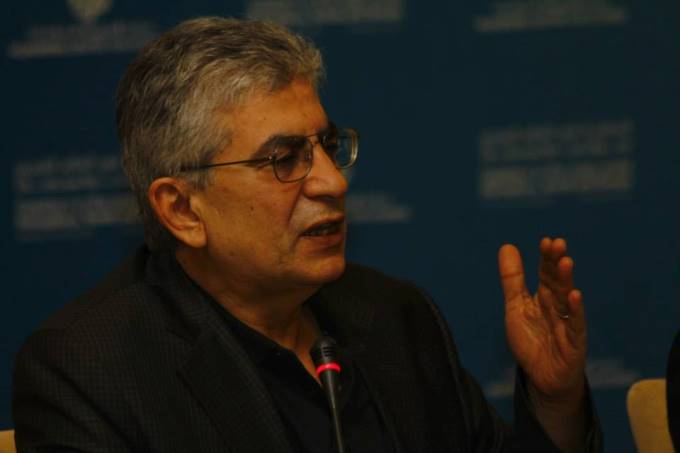
(Basheer Nafi – Al Quds Al Arabi ) – The claim that every revolution has an associated counterrevolution is neither contrivance or ‘crystal-ball gazing’, but is a principle that is applicable to almost all revolutions, including the English, French, and the European revolutions of the mid-nineteenth century, as well as the Iranian Revolution and the east European revolutions after the Cold War.
A common thread weaving through most modern revolutions is that they expressed the desire of people to restrain the modern state either by demanding constitutional rights and democracy, confronting authoritarianism and the hegemony of the ruling elite, or by demanding a just social system based on the redistribution of economic burdens and wealth. The success of a revolution has never been guaranteed. In the past few decades, the countries that have had relatively easy transitions to democracy have been those that were part of broader regional systems, or which had received support from regional bodies such as the European Union. Even such countries, were not always spared from counterrevolutionary processes.
After the Tunisian, Egyptian and Libyan uprisings successfully brought down their governments – and Yemen and Syria seemed to be following suit – hardly any of them prepared themselves to confront the forces of counterrevolution. Because there is only a single regional order that encompasses the Arab world – which, in terms of language, history and culture, transcends even the official regional framework represented by the Arab League, and because revolutions broke out in only a few Arab states, the clouds of counterrevolution gathered rapidly immediately after the first wave of 2011 uprisings. Since 2012, strong bonds have developed between, on the one hand, the social and political forces that were opposed to revolution and democratic transition in each country, and, on the other, the Arab states that assumed a leading role in the counterrevolutionary movement.
The counterrevolutionary camp – with its businessmen, groups of youth acolytes, foundations and organisations, media networks, political parties, social factions and state institutions linked to the old regime – was no less capable, all-encompassing and influential than the revolutionary camps. The past three years – since the success of the Tunisian and Egyptian revolutions – witnessed a massive mobilisation of political funding whose scale has been unprecedented in Arab history, with a concomitant mobilisation of weaponry, and the establishment of relationships and alliances that were previously unimaginable. These processes resulted in a coalescence of the princes of monarchical states with liberal and nationalist intellectuals and activists; military and security officers with investors with western backgrounds; and gangs of thieves, smugglers, murderers and security officials with revolutionary activists.
Without doubt, the climax of the counterrevolutionary movement was reached in 2013, after the abortion of democracy in Egypt and the faltering steps of political transition in Tunisia, Libya and Yemen, as well the success attained by a sectarian alliance in halting the progress of the Syrian revolution and the abortion of the popular uprising in Iraq. Because Turkey chose, in the first year of the Arab uprising, to align with the camp demanding change and democratic transition, because a broad spectrum of Arab opinion viewed with admiration what had become known as the ‘Turkish Model’, and because Qatar played a very visible role in granting monetary, media and moral support to the revolting countries, both Turkey and Qatar were targeted together with the Arab revolution countries. The rapid and easy victory of the 2013 coup in Egypt puffed up the Arab counterrevolutionary movement with arrogance, confirming the belief in its main centres that it was capable of achieving miracles and in re-establishing the status-quo ante in the Arab world. The counterrevolutionary forces ceased to act with any reservations, and made no attempts at subtlety or discretion; nor did they attempt to take stock of the immensity of the destruction, the countless victims and the amount of blood spilt as a result of the tumultuous suppression of the will and aspirations of the people.
Hundreds of millions of dollars and convoys of weaponry were pumped into Libya, where various factions linked to the former regime had hastily aligned with adventurous officers, ambitious technocrats and tribal forces, all aiming to uproot the forces and institutions of the Libyan revolution. Large amounts of money were pumped into Tunisia to revive groups loyal to the regime deposed in 2011, and to establish a united opposition front that included elements from the extreme right to the extreme left, in order to confront the Islamist democrats and their leftist allies. The Tunisian counterrevolution had no qualms about compromising the country’s security, and employed the tools of character assassination and bloody assassination in equal measure.
Despite conditions in Yemen being visibly different, it was not spared similar initiatives that sought to reverse the movement of change, in order to force the country to submit to the will of the members of the Gulf Cooperation Council (GCC). In Syria and Iraq the sectarian camps supported by Iran was more zealous in its attempt to extinguish the revolutionary movement, forcing the peaceful mass popular mobilisation for just governance, freedom and democracy into a brutal civil war that has resulted in the destruction of vast areas in these countries. Because one of the most prominent facets of the coup against the people and their will was the open war against the democratic, reformist-inclined Islamist forces, and because Hamas was viewed as part of this category, an extremely vile incitement campaign was launched against the Gaza Strip, with intensive Arab-Israeli coordination, to undermine the influence of political Islam in Gaza.
The Arab counterrevolutionary forces – in their intoxicated confidence and arrogance – were blissfully unaware of the complexity of the Arab political sphere, and did not realise that the Arab revolutionary movement was not initiated just by immediate pressing circumstances in individual countries, but was a consequence of more than a century of ferment. The Arab counterrevolution made its onslaught like an unbridled storm and it seemed as if the Arabs would be blown back to an era even darker than the one they had revolted against. However, the counterrevolutionary ascent did not last long; a year after it claimed its Egyptian prize, the capitals of the Arab counterrevolution find themselves living through a period of depression.
The Gaza Strip was subjected to a major Israeli onslaught that served both Israeli and Arab counterrevolutionary objectives. However, the tiny, besieged territory remains steadfast in the face of the violent onslaught – in spite of the large number of civilian casualties and the catastrophic damage inflicted on it, and the Israeli military machine has failed to weaken the capacity of the Gaza resistance or to attain any of its political objectives from its operation. The Islamist resistance in Gaza has emerged from this battle stronger, more committed, and with more popular support in the Palestinian and Arab spheres.
Libya was also subjected to another attack, the full details of which have not been revealed. However, the Libyan faction that attempted a coup against the revolution has been defeated, even if it has not yet been totally effaced, and Libyans now wait to see if the 3 July coup regime in Egypt will decide to intervene militarily in their country, which has already been overburdened by external interference. Despite transition processes in other Arab revolution countries proceeding very slowly, it now seems clear that the counterrevolutionary forces will not succeed in repeating the Egyptian model of July 2013. Even in Egypt, people are still in the streets and the dream of stability remains distant. It is also not certain that the economic decline will not result in a total meltdown. The Syrian revolution has succeeded in slowing the progress of the regime’s forces and its sectarian allies, while the same sectarian camp that opposed the will of the people finds itself helpless in the face of the challenges it created in Iraq. The attempt to isolate Qatar within the Gulf collective has failed, and those that attempted to isolate it now face isolation themselves. Similarly, the delusions of intervening in Turkish affairs have dissipated and those who have been wishing for Prime Minister Recep Tayyip Erdogan’s speedy exit from the political sphere have to live with the prospect of his presidency for the next ten years.
No place on the globe compares with the Arab world in its cultural and historical cohesion, or in its political divisions. In spite of the similarities in the general patterns of modern popular revolutions, there are indications that the Arabs are creating a paradigm that is unique, and that the intense struggle for the Arab soul and the future of its people will continue for a while longer. Attempts to overthrow revolutionary movements and to subvert the will of the people have sometimes been successful, and sometimes not. One cannot, therefore, be certain about when this movement will reach its desired destination; what is certain, however, is that the movement of history and the prospects of change have returned to the path they had been deviated from.
Translated from Al Quds Al Arabi














